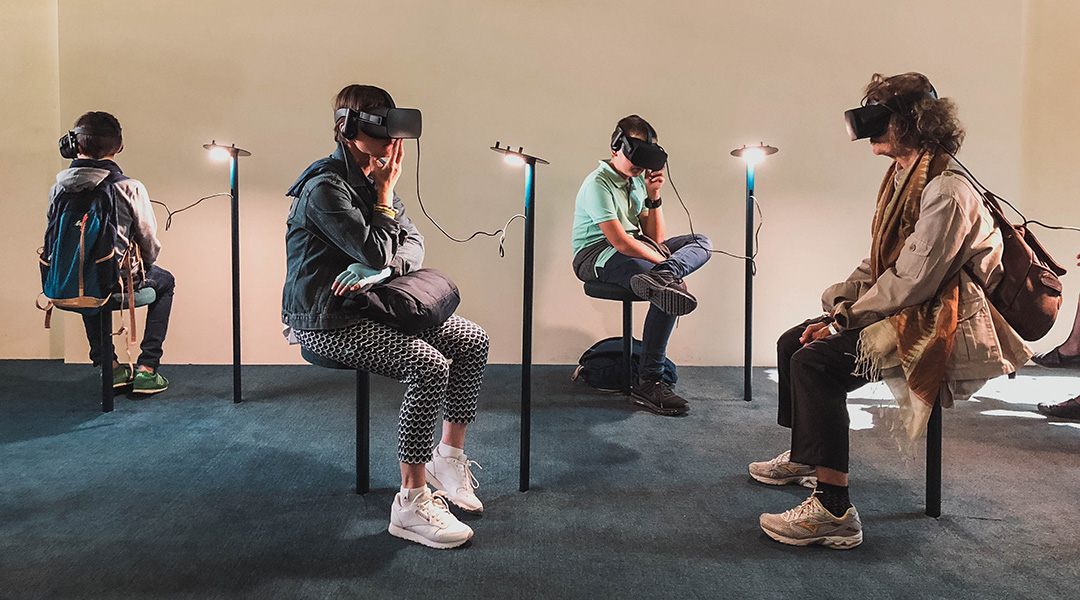Immersive virtual reality (VR) is a system that allows users to don a headset and experience out-of-this-world encounters and environments without venturing past their living room or facing anything riskier than bumping into furniture.
Gamer’s aspirations to enter virtual worlds and experience sight, touch, sounds, and even tastes and smells is expected to see the global VR market rise from a value of around $12 billion USD in 2022 to an estimated $22 billion USD by 2022, according to Statista.
Beyond gaming, VR is also proving important in other applications like education, training, and even medical rehabilitation. As VR becomes more commonplace in households across the developed world, the technology behind VR becomes more advanced. This advancement includes improved graphics and visuals.
New research shows that graphical fidelity may not actually be the most important aspect of VR worlds. A paper published on the ACM Digital Libary platform suggests that a strong emotional connection may actually be more important than either graphics or field of view — how much of the virtual environment is visible to the user at any one time — when it comes to feeling totally immersed.
“A lot of money goes into making headsets and screens better and into rendering virtual worlds more realistic, but more effort needs to be centered on improving the user’s emotional experience,” University of Bath Department of Computer Science lecturer and research lead author Crescent Jicol said in a statement from the university.
The findings of this study mean that in the future, gamers may be under less pressure to purchase expensive high-end VR hardware.
Pitting technology against emotions
The research is the first study to test the impact of both technical and human factors on a user’s sense of “presence” — the feeling of agency and the ability to have an impact — in a VR world.
Jicol and his colleagues in the University of Bath’s Computer Science and Department of Psychology units gave 360 participants interactive games to play and a questionnaire to complete following this. This allowed the team to determine the emotions and agency that the participants felt while in this VR world.
The emotions experienced by users — fear and happiness — and agency of these worlds, as well as the graphics and field of view of the games, were manipulated by the researchers, with a total of 16 possible combinations of VR worlds to be encountered. This allowed the team to see how important each of these factors actually was on presence.
One game involved the user defending themselves against a wolf using a torch they shine in the threatening animal’s face, with this fear-inducing VR environment being more effective when graphically realistic. When the wolf is replaced with a playful dog and the torch is swapped out for a laser pointer that can be used to play with the hound to induce happiness, the field of view and graphics had little impact on presence.
“Counter to previous assumptions, technical factors do not affect presence directly to any meaningful degree. But when technical factors are paired with human factors — for instance, a virtual environment’s ability to induce fear and agency — presence is impacted,” Jicol said. “In other words, ‘being there’ needs to be complemented with ‘doing there’ for maximum impact. The main takeaway is that emotion and agency are crucial to inducing presence, but visual realism is not.”
Jicol and colleagues now intend to further explore which factors influence how users experience VR. They will move beyond just emotions like fear and happiness and attempt to see how the personality traits of a user influence their sense of presence in a VR environment.
The findings of this extended research could help the developers of future VR software to improve virtual worlds by tailoring the emotional and technical aspects of their creations.
Reference: Crescent Jicol, et al., Realism and Field of View Affect Presence in VR but Not the Way You Think, ACM Digital Libary, (2023). DOI: 10.1145/3544548.3581448
Feature image credit: Lucrezia Carnelos on Unsplash

















